“Face the Strange,” the fourth episode of Star Trek: Discovery’s final season, gave us a fun, old-fashioned Trek time travel adventure, but one scene in particular seems to tie into an intriguing and previously unexplained look into the far future.
Playing the long game with Short Treks
In “Calypso,” the second episode of Star Trek: Short Treks, we were presented with a vision of a future USS Discovery where the ship had been abandoned for almost 1,000 years. The ship’s sole inhabitant was Zora, a sentient AI with a penchant for watching musicals from Hollywood’s Golden Age to pass the time. While season 3 of Discovery partially delivered on the showrunner’s promise to provide a link to “Calypso” by showing how Zora emerged from the “Sphere Data,” just how the USS Discovery ended up abandoned in that far future has remained a lingering mystery.
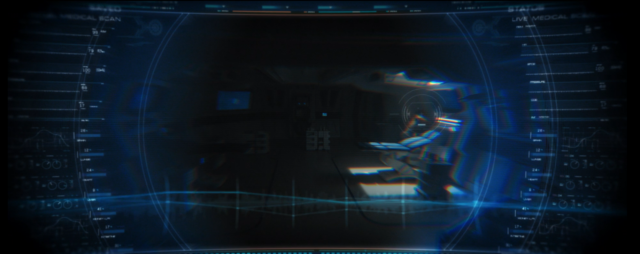
Zora’s POV in “Calypso”
“Face The Strange” didn’t see Burnham and Rayner jump anywhere near that far—just to the year 3218, 30 years or so into the characters’ futures. In this dark future, the Breen had obtained the Progenitors’ technology from Moll and L’ak and used it to launch a devastating attack on the Federation. Burnham and the rest of Discovery’s crew had been dead for decades, and Zora was again the ship’s lone occupant, with a penchant for the music of Doris Day.
Zora’s musical taste and familiar shots of her “Zora Vision” POV suggest an attempt to resolve the remaining mystery linking the Short Treks episode to Discovery. One big clue is that “Face the Strange” was written by Sean Cochran, who co-wrote “Calypso” with Picard co-creator Michael Chabon. So if we accept that the callbacks to “Calypso” were deliberate, what can they mean?
Let’s take a look at three potential possibilities…
THEORY 1: “Calypso” is part of the same alternate future
The first and most obvious explanation is that “Calypso” is a continuation of the possible future shown in “Face the Strange.” The Discovery’s crew are killed by the Breen, who succeed in conquering the Federation. Zora is then left on the deserted ship for the next 1,000 years (which would place it around the 43rd Century), whiling away the centuries listening to Doris Day and watching musicals—in particular, the Fred Astaire/Audrey Hepburn classic Funny Face—until she encounters the character of Craft (Aldis Hodge).
Zora’s musical tastes, the abandoned ship, and the “Zora vision” scenes would definitely suggest “Calypso” as a continuation of this particular future. Since Burnham and the Discovery crew are fighting to find the Progenitors’ technology before Moll and L’ak (and likely to succeed), this would mean that future would cease to exist, and “Calypso” is an intriguing never-to-be alternate future, similar to the outcome of episodes like Voyager’s “Timeless” or Next Generation’s “All Good Things.”
There are however some inconsistencies between the two futures.
Firstly, the version of Discovery seen in “Calypso” is the 23rd-century version, prior to its 32nd-century refit. Most notably, the ship clearly has the original NCC-1031 designation, missing the ‘A’ that was added in the refit. Of course, the obvious, real-world reason is that “Calypso” was made between seasons 1 and 2 of Discovery, before the show’s jump to the future and redesign of the ship. This doesn’t make sense in-universe, but Short Treks has some other canon hiccups, so trying to explain away the missing “A” designation may be asking too much. The ship seen in “Face the Strange” is also in worse condition, but it’s likely Zora had Dots available that could repair the ship.
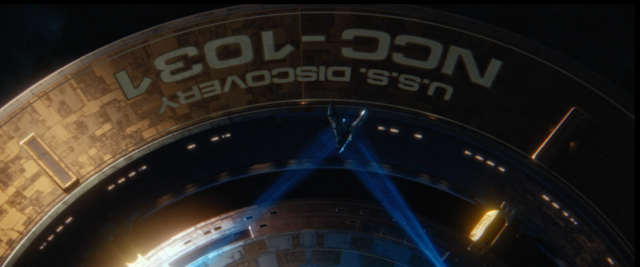
The Discovery in “Calypso” – No bloody A, B, C or D
Another inconsistency is that in “Calypso,” Zora tells Craft “the crew is away at present,” and says she has orders to maintain her current position, which doesn’t match with the events shown in “Face the Strange,” where she clearly stated that the crew had died. However, we don’t know what 1,000 years of isolation may have had on Zora. As a sentient life form, it’s possible by the time of “Calypso” she’s been experiencing some kind of AI senility or has repressed the traumatic memories of the crew’s demise. It’s also possible that she incurred some damage over the centuries, making her misremember the events.
In “Calypso,” Craft states he’s a soldier fighting the “V’draysh,” which is a bastardization of “Federation,” according to Michael Chabon. This doesn’t make sense if the Federation was defeated 1,000 years earlier; would the name still be in use? The name “V’draysh” was used once in the third season of Discovery, where it indeed related to the Federation.
While it’s possible that “Calypso” is a continuation of the alternate timeline established in “Face the Strange,” there are enough inconsistencies that we should consider some alternative scenarios.
THEORY 2: “Calypso” is Zora’s dream
One new piece of information we find out about Zora in “Face the Strange” is that she dreams. Her first line to Burnham is “Captain, is that you? Or is this another dream?” Although we’ve no idea when this started, it seems the years of isolation coupled with Zora’s continued development have led to her having dreams. Obviously, this isn’t unprecedented in Trek. Data eventually evolved to the stage where he could dream, so it follows that Zora can too.
Could the events of “Calypso” be Zora dreaming of some company after years of isolation? It’s certainly a possibility, and dream logic is a good way of explaining away the inconsistencies, such as the USS Discovery’s appearance and the whereabouts of the crew. “Calypso” was an atypical, sometimes surreal Star Trek story, and having it be a dream does make a degree of sense, with Zora its unreliable narrator.
There could also be a clue in the music Zora’s listening to in “Face the Strange.” “Que Sera Sera” is a song about a girl asking her mother about the future and what will happen to her. Is this a hint that the Zora we see past this point is her guessing about her future?
One major argument against the dream theory is that “Calypso” isn’t Zora’s story, it’s Craft’s. It starts with him and follows his time on Discovery and his odd love story with Zora. The story is told from his viewpoint. The only time this switches to Zora’s point of view is at the very end when Craft leaves Discovery and the camera remains behind, revealing Zora has named his shuttlecraft “Funny Face” and then returning to the bridge where Zora is again playing the movie. Although possible, the majority of dreams are in the first person. It would be unusual to dream a story from someone else’s viewpoint where you’re a secondary character. Then again, Zora isn’t human. Who knows what AIs dream of. Electric sheep maybe?
THEORY 3: “Calypso” is still in the future and episodes aren’t linked
It’s also possible that beyond the aforementioned links, the timelines from “Calypso” and “Face the Strange” are not directly linked. Zora’s musical tastes and use of her “Zora Vision” POV is something that will evolve regardless and so the future seen in “Calypso” is still to come. To completely tie it into the canon, some explanation could be made for why the ship had to be de-retrofitted before being abandoned for the best part of 1,000 years. The Discovery team didn’t know season 5 would be their last, so tying up the “Calypso” loose end and directly linking to Discovery’s final fate probably wasn’t a part of the plan.
Whatever will be, will be
There is a nice poetry to the “dream” theory, so that is our preferred way to look at it. The most likely explanation is that we’re not supposed to know. “Calypso” is an intriguing (and, to be honest, beautifully told) look at the Discovery’s possible future. While it’s been hinted at in Discovery, the Short Treks episode probably works best as a fun “what if.” The sequence in “Face the Strange,” besides serving as a warning to Burnham and Rayner of the price of failure in their mission, also offered Sean Cochran and the show’s producers a fun tip of the hat to “Calypso” as well as offering an enigmatic hint as to its connection to Discovery.
But what do you have to say? Let us know in the comments below
Keep up with the latest about the Star Trek Universe at TrekMovie.com.

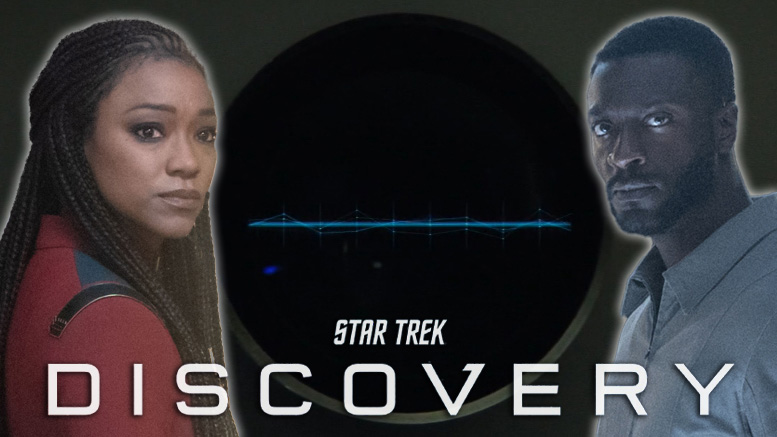
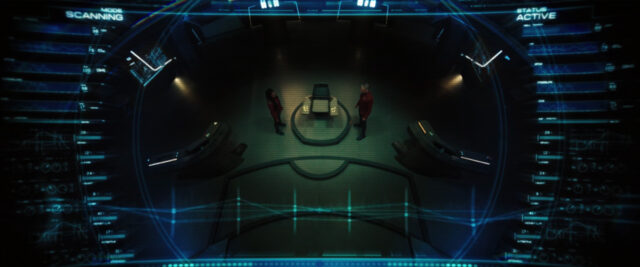
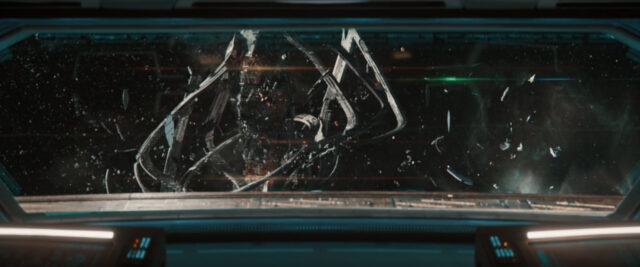
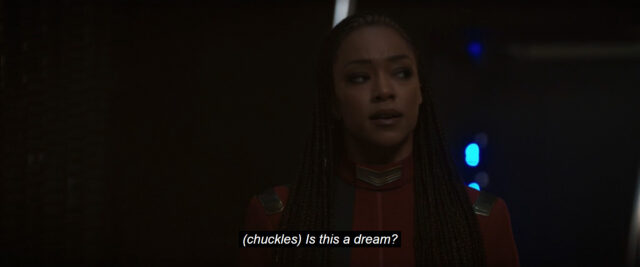
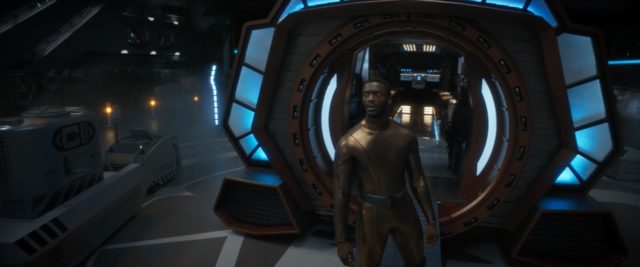
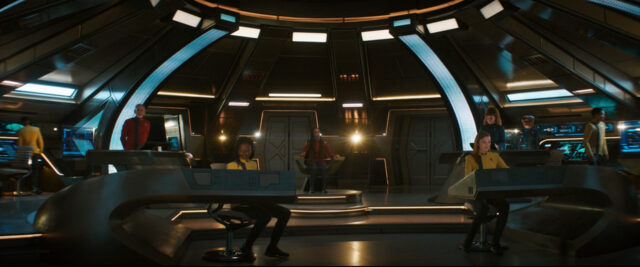
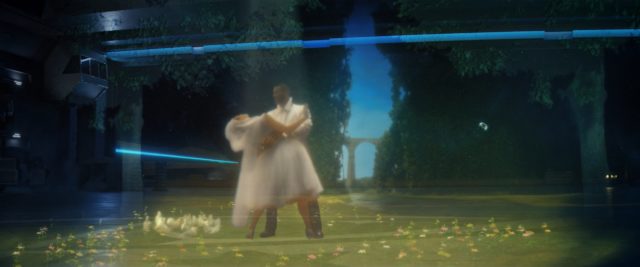
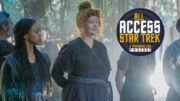

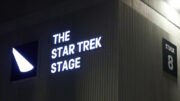
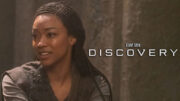
definitely on the “Dream Team”, it’s the only one that makes sense
Is it just me or was there some exciting plan to jump forward where the Federation was so gone what was left had gone wrong and only the Discovery reunited with the crew could rekindle it, then they chickened out all “there is no way we can do a Trek show without mommy Starfleet Command there to help!!”
I definitely sense a tension along those lines. The beginning of s3 certainly seemed to point in that direction. They could’ve been Robin Hoods.
You’ve nailed the particular item about TREK that has frustrated me endlessly since the mid-80s. I never felt it had to be adventures set within Starfleet. After they went rogue in TSFS, I thought the crew should live out their golden years on the BoP/Bounty, and that the money production saved on matte shots and other earthcentric filler like spacedock could be put into showing some actual strange new worlds. Would also allow more time for the supporting cast and for a genuine ‘band of bros and sis’ feel among them. (and frankly, Starfleet didn’t deserve them after all the political paranoia evinced post-Genesis … suddenly this evolved future civilization is coming off contemporary, feeling more shadowy-Watergate than I could see as remotely credible.)
The key bit that informs my take on TREK comes from David Gerrold when he talked about how good drama revolves around ‘Kirk has a decision to make’ and not ‘Kirk is in danger.’ The original series buttressed that by often having the ship out on the rim where he couldn’t rely on timely responses from the hierarchy and had to make hard calls on his own. What better way to take that further than to have them on the Bounty, getting into situations and making ethical choices that DON’T have to cowtow to a distant and possibly unreliable bureaucracy?
I also though DS9 (which I really really like, far above any other followup to TOS), should have turned a corner with Sisko supporting the Maquis, not hunting them down like Starfleet’s pit bull. But again, that would have put them outside the auspices of ‘mommy Starfleet’ as you say.
I don’t know if I’d have stuck with DSC in s3 even if they had upheld this ANDROMEDA-style take on things, just because TPTB didn’t have the golden-platinum crutch of Anson Mount to keep the show going in spite of the bad writing. But I’d have probably at least considered watching it, just to see how they dealt with things.
I think that is the problem with Trek now… e instant communication and thousands of starships to back you up, and the adventures of your single starship on the frontier just don’t seem to matter as much. In TOS, Kirk makes the wrong decision and it’s intergalactic war and millions of lives on the line. In TNG the best episodes is where Picard is compromised by the Borg and they get to take over or destroy the starfleet. DS9 rectifies this by letting Sisko basically command the entire fleet (though it sure looks silly when space combat is lines of thousands of ships just running into thousands of other ships).
I feel someone in Discovery was trying to fix the problem of being “out there” again (probably whoever put color into the big E bridge) and then got overruled (along with boring down of the big E bridge).
Calypso basically hinted they would be left out there alone in some primitive starship.
The fate of the entire Federation depending on their ability to rebuild alliances, rebuild ideals. You could explain the lack of far off magical tech by the fall.
Instead they chickened out, I don’t know why, but it’s condemned Discovery to rather the rather bland where they literally have to have the Federation fall apart AGAIN to fix it.
Anyone play Star Control 2? They need to make that into a TV show lol
kmart — I LOVE what you wrote here regarding the events post ST3:TSFS and really everything you said here. VERY insightful!
Thanks. As you come across my postings here, you’ll see I’m very big on exploring ‘treks not taken,’ including what they could have done with an Enterprise-B limited series.
Michael Chabon was the worst choice to write any Star Trek story.
“Calypso” don’t fit in any possible way to canon.
Calypso was a great episode of Trek, and fairly beloved based on reviews at the time. Sorry it wasn’t for you!
“Calypso” is one of Star Trek’s best episodes, and it was written before later seasons of Discovery made it not fit canon.
Yeah, he’s terrible lol look at Picard Season 1? Embarrassingly bad.
He wrote the two best episodes of SHORT TREKS, “Calypso” and “Q&A.” He also did a great job with PICARD season one.
The first season of Picard was fantastic up until the two-part finale when it was (somehow) simultaneously drawn out and rushed. It felt like the original plan was for Picard to fully and truly die, but then either Stewart decided he wanted to continue with playing Picard, or TPTB intervened, but that was by far the biggest misstep in season 1.
Unfortunately, while season 1 was lauded by critics, it was mostly derided by fans. As such, subsequent seasons largely ignored some of the more intriguing idea introduced in season 1 – exploring the state of the Romulans post supernova (is the empire completely gone, are they trying to rebuild, etc.); exploring a bit more of the Zhat Vash (i.e. did it survive after the events of the finale) – but not too much more; what’s the general state of the Federation as it appears to have entered a bit of an isolationist state; and what’s up with the scary AI things as seen in the premonition and briefly in the season finale.
Alas, I highly doubt any of those ideas will be explored at this point.
Why does it need to fit into canon? It’s 1,000 years in the future.
Canon is overrated. Calypso was a lovely story and exactly what Trek should be doing.
I have very little confidence they’ll resolve this storyline between short treks & season 5. They would have explicitly made it apparent they were connecting to that short trek in that episode & not be so nuanced.
I’m imagining the extra shooting they did to make it a “fitting series finale” is along the lines of Poochie from the Simpsons…I have to go now, my planet needs me. [poochie died in space during his trip home].
I hope they never clearly explain it and leave a sense of mystery. “Calypso” was so lovely, partially because it wasn’t concerned with overly pat canon connections.
Exactly.
Agreed!
To this day I always wondered how this story came around? It seems weird it would be a coincidence Chabon set this story so far in the future a season before it happened on the show itself. But then you have to wonder if he was told directly the plan then what were the parameters? How far could he go with it? Did they always know it was something they would have to deal with and had a plan or was it all after the fact?
I would love if someone just talked about the short and how it came about? Maybe we get it after the show ends.
My guess is that Chabon et al. wanted to create a wild future possible story line for Discovery that was outside any continuity restraints or existing plans they had. Maybe Calypso served as a pilot for where Discovery eventually went with its future jump, even if the details were ultimately quite different.
As you note, maybe Chabon will someday do a commentary track on the story and reveal its origin. He was quite communicative about his work on Trek while he was doing it.
There’s also still the open question, who upgraded the probe that Pike and Tyler fought with
Wasn’t it just Control in the future?
I’m squarely in the camp that I just don’t care to see it explained in any way. Whatever plan Chabon had to tie in this flash forward was dropped a long time ago, and it will be nothing more than a shoehorn explanation, at best.. with no story payoff. Just let it be, and make up your own head canon if you want to.
Yep. I still wish Enterprise hadn’t felt it necessary to explain the Klingon foreheads.
I generally find a lot of these genre “and that’s why x has y” explanations pretty thin. I don’t need to see how Indiana Jones got his scar, how Nick Fury lost an eye or how McCoy got his nickname.
There’s something to be said about leaving some things to the imagination.
Small point to respond to but just gotta say – I actually kind of like the Enterprise explanation for the ridges. I just don’t think they needed to bend over backwards to explain it away. A simple dialogue exchange in a random episode would have been enough.
I loved Calypso and I am VERY OK with it having been Zora’s dream, or in-universe really happening in that alternate future with a few inconsistencies. I have a feeling (no idea) that this is all we will get regarding Calypso and I’m OK with that — not everything needs to be explained.
Calypso was one of the most beautiful, artful pieces of Trek ever made. I almost wish it had been expanded into some kind of standalone feature-length piece.
Agreed, it was beautiful!
Based on what happened in Season 2, Calypso was seemed to be a red herring for the crew abandoning the Discovery with the Sphere data, which allowed it to gain sentience. It was a possible future that was averted when they took the Discovery into the far future.
It was a lovely episode, but it really didn’t fit into continuity, both before and now.
For me, it makes more sense that “Calypso” be in the same time-line as season 2 if the Red Angel had not changed time by jumping into the 32nd century. No jump, no refit.
I was wondering what they’d do, as two of the other three first season Short Treks did, indeed, tie in.
But I always saw the thousand year reference, together with “V’draysh” being used in Season Three, as pointing to an abandoned option for Season Three- they jump forward, the crew temporarily abandons the ship, the Federation has gone bad (or is seen as having done so), Calypso happens, the crew returns, and we pick up from there.
There is a possibility that Zora de-evolved the ship during repairs as she became more senile after 100s of years of isolation and being alone. We’ve seen the DOTS repair and repaint many times. Maybe, with Zora’s confused directions, they repaired the ship to its earlier version. You’ve gotta love Star Trek! There are always possibilities.
Yeah the DOTs and programable matter means Zora could have refit Disco back to the earlier form as she got sentimental in her old age and Isolation. I just view it as, yes, it was an extension of the “bad future” seen in this episode.
I remember enjoying this short when it came out. It would probably be cool to leave it as-is, not explain anything at all. A mystery piece.
I agree, Calypso was an intriguing and beautifully told story.
If it’s all Zora’s dream—and the writers don’t bother to clue us in to that, a la Data getting a whole episode where it is made very clear that he is experimenting with dreaming—that’s super lazy writing. I’ll come back to this.
I could be fine with ‘What if?’ Trek stories that show us events in an unexplained, divergent timeline. I will point to Marvel’s animated What If? show as proof of the viability of this storytelling approach for a modern, expansive, TV & film franchise.
I have just one, big problem: the entirety of Star Trek as a franchise, to date.
Let me explain. No, there is too much. Let me sum up.
Star Trek TV and movies haven’t historically done pure ‘What If?’ storytelling. In fact, Trek writers across the decades have worked hard to preserve the coherence of the ‘Prime’ timeline and any offshoots or variations we see.
Starting with Mirror, Mirror and all the way through Discovery’s adventures in the mirror universe, Trek TV writers have bent over backwards to help us understand what we were seeing, whenever we saw a divergent timeline.
For all the many time travel stories (and all of Janeway’s headaches caused by temporal paradoxes), the writers have always tried to connect the dots for us.
Even the Kelvin-verse movies spent precious screen time showing how that alternate timeline diverged from Trek ‘Prime.’ We got a passing-of-the-torch scene with two Spocks (Nimoy and Quinto) and so forth, to really make sure we understood.
This is important because as the audience, we want to enjoy time with these characters we love. When an incoherent storyline distracts us from going on the adventure with these beloved characters, we get frustrated. The plot can be twisty and momentarily confusing, but it ultimately exists to provide opportunities for Kirk, Sisko, Burnham, et al to face challenges, be heroic, and grow—not make us go, “well I’ve seen the whole show, and it just doesn’t make any sense.”
The so-called ‘beta canon’ of books, comics, fan-made productions, etc. is another animal, of course. There, anything goes. And it has to be this way because after so many hundreds of TV episodes and so many movies, it gets really hard for writers to keep it all connected. I think a fair argument could be made that there is now way too much canon to keep tying everything together perfectly and tell exciting, new stories with familiar characters. That’s fine for books and comics and whatnot. There you have the freedom to take our familiar characters and play with them in a new sandbox if you want to.
But the TV and movie writers have always given us exposition—and a fair amount of technobabble—at least attempting to preserve a unified chronology of the Star Trek universe. They didn’t alway succeed 100%, but we’ve never seen them just throw in the towel on trying to make it all make sense.
If Calypso ends up being an unexplained ‘What if?’ it would be a first for ‘alpha canon’ Trek, I think.
I don’t hate the idea of Star Trek doing this, but could the writers / producers maybe give us a heads-up that they’re going this way? Or do it with some consistency instead of a one-off Short Trek that leaves fans wondering and theorizing?
Back to Marvel’s What If? series—there at least you have The Watcher giving you some intro voiceover explaining what’s going on. You see Timmy, audiences like mystery and surprise, but also really appreciate it when you make things understandable.
My conclusion: in the context of Star Trek, this is just lazy writing and/or a willful disregard for the unwritten rules of logical storytelling that Trek has established with its fan base for decades. It seems especially lazy or careless since Face The Strange bothers to hint at some answers, but doesn’t actually give us any that make sense.
Granted, we still have a few Disco episodes to go. They might surprise us by revisiting this whole debacle and clearing things up, Trek-style. They’d have to jump through some hoops to reconcile the discrepancies, but we’ve seen plenty of crazy stories. It’s sci-fi, anything can happen. It was a chroniton explosion. Q’s son did it. Whatever.
Somehow, I doubt these writers care. Discovery has always been a show that prioritized ham-fisted emotionalism over logical storytelling. I think that will be its legacy. Prove me wrong, Discovery writers! Time is running out, and as far as I know there’s no alternative timeline in which you will get a season six to be entertaining and coherent.